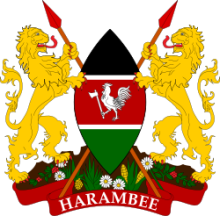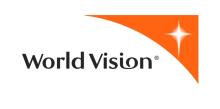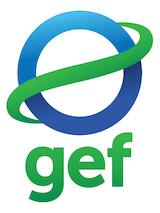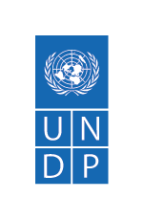Adapting to Climate Change in Arid and Semi-Arid Lands (KACCAL) in Kenya
The rural poor are the most vulnerable to the impacts of Kenya’s current climate variability. In response this project is supporting poor and vulnerable communities in the Mwingi District of the Arid and Semi-Arid Lands (ASALs) to enhance their adaptive capacity to drought (and flood). Working in the pilot areas, this is being achieved through enhanced access to and management of water for irrigation, promotion of indigenous crops that more resilient to anticipated climate (and improved access to markets for these crops), and promoting livestock varieties that are more suited to the climate, development and promotion of alternative livelihood opportunities (such as beekeeping activities). The project is also strengthening climate risk management planning and capacity of District level planners to mainstream climate change into District-level sectoral development plans. Extension workers will be supported to improve their adaptation extension advice to farmers based on best available climate forecast information.
According to Kenya’s First National Communication (2002), the incidence of droughts is anticipated to increase both in intensity and frequency as a result of climate change. In response, UNDP and the World Bank have initiated a joint project on Adaptation to Climate Change in Arid and Semi-Arid Lands (KACCAL) aimed at facilitating adaptation of the key stakeholders in arid and semi-arid lands to long-term climate change. The joint project seeks to develop and pilot a range of coping mechanisms for reducing the vulnerability of small-holder farmers and pastoralists in rural Kenya to long-term climate change, including variability.
Project activities are aligned with UNDP‟s comparative advantage in aspects of capacity building, and support for MDG-based planning, as well as experience in designing and implementing climate change adaptation and sustainable land management projects. The UNDP component focuses primarily on enhancing adaptive capacity of key stakeholders in the District of Mwingi, complementing the support given by the World Bank in four other districts: Garissa, Turkana, Marsabit and Malindi.
Source: UNDP Kenya Project Document (PIMS 3792)
Project details
Levels of intervention
- Community
Source of funds
- Global Environment Facility - Special Climate Change Fund
Key implementers
- Country Office
- Local Governments
- National Governments
- Non-Governmental Organizations
Funding amounts
Project partners
- United Nations Development Programme (UNDP)
- Global Environment Facility (GEF)
- World Vision Kenya
- Kenya Ministry of Agriculture
- World Bank
Introduction
The rural poor are the most vulnerable to the impacts of Kenya’s current climate variability. In response this project is supporting poor and vulnerable communities in the Mwingi District of the Arid and Semi-Arid Lands (ASALs) to enhance their adaptive capacity to drought (and flood). Working in the pilot areas, this is being achieved through enhanced access to and management of water for irrigation, promotion of indigenous crops that more resilient to anticipated climate (and improved access to markets for these crops), and promoting livestock varieties that are more suited to the climate, development and promotion of alternative livelihood opportunities (such as beekeeping activities). The project is also strengthening climate risk management planning and capacity of District level planners to mainstream climate change into District-level sectoral development plans. Extension workers will be supported to improve their adaptation extension advice to farmers based on best available climate forecast information.
According to Kenya’s First National Communication (2002), the incidence of droughts is anticipated to increase both in intensity and frequency as a result of climate change. In response, UNDP and the World Bank have initiated a joint project on Adaptation to Climate Change in Arid and Semi-Arid Lands (KACCAL) aimed at facilitating adaptation of the key stakeholders in arid and semi-arid lands to long-term climate change. The joint project seeks to develop and pilot a range of coping mechanisms for reducing the vulnerability of small-holder farmers and pastoralists in rural Kenya to long-term climate change, including variability.
Project activities are aligned with UNDP‟s comparative advantage in aspects of capacity building, and support for MDG-based planning, as well as experience in designing and implementing climate change adaptation and sustainable land management projects. The UNDP component focuses primarily on enhancing adaptive capacity of key stakeholders in the District of Mwingi, complementing the support given by the World Bank in four other districts: Garissa, Turkana, Marsabit and Malindi.
Source: UNDP Kenya Project Document (PIMS 3792)





Project details
Kenya's geographic location makes it inherently prone to cyclical droughts and floods. According to the First National Communication (INC), such types of cyclical climate-driven events will increase in intensity and frequency due to global climate change. Serious repercussions are anticipated thereby not only on agricultural productivity but also the achievement of poverty reduction and other Millennium Development Goals. In response, UNDP and the World Bank, with funding from the Special Climate Change Fund through Global Environment Facility (GEF), have designed a four-year (2008-2012) project for implementation entitled "Adaptation to Climate Change in Arid and Semi-Arid Lands" (KACCAL).
The project seeks to facilitate adaptation of key national and local level stakeholders to long-term climate change by developing capacity to manage climate risks, adjusting relevant national policies and programmes to better reflect impending concerns, and piloting a range of priority coping mechanisms for reducing vulnerability of small-holder farmers and pastoralists in rural Kenya. The project builds on an existing development baseline in Kenya _largely activities led by the Arid Lands Resource Management Programme and the Ministry of Agriculture), with SCCF resources earmarked for specific activities that increase adaptive capacity to cope with droughts and floods under changing long-term climate conditions.
Activities focus primarily (although not exclusively) on interventions in the Mwingi district. The district, which is in the semi-arid Ukambani region, has a 66% chance of climate induced-crop failure each year. The UNDP component is anchored around three global level outcomes which underpin the joint UNDP/World Bank project:
- Strengthened knowledge base, coordination and information sharing towards action on management of climatic risk at the National and Regional levels,
- Capacity developed and investments made to integrate CRM into local/district planning, and for engaging the private sector, and
- Support for community driven initiatives to enhance the resilience of livelihoods and ecosystems to climatic risk.
UNDP-led activities will enhance adaptive capacity in this pilot area in terms of (a) strengthening drought mitigation skills of extension workers whose role is to support household and community based projects; (b) improve the flow and use of early warning information in drought/flood mitigation practices in community services and programmes; and (c) identify and remove barriers impeding adaptive capacity of community level stakeholders to overcome long-term climate change risks. The World Bank's activities will focus on interventions in another four districts within Kenya.
The design of UNDP's planned interventions within the KACCAL project has been guided by UNDP's Adaptation Policy Framework (APF) approach in that it took into consideration current vulnerabilities (to climate and non-climatic factors), future climate change and anticipated risks, and adaptive capacity requirements and barriers. The project design phase benefited from a participatory approach where stakeholders from government, communities, donors and other interested parties were consulted and had the opportunity to contribute.
Source: UNDP Kenya Project Document (PIMS 3792)
- Community
- Country Office
- Local Governments
- National Governments
- Non-Governmental Organizations
Communities in the selected districts of the Arid and Semi-Arid Lands (ASALs). This joint project seeks to develop and pilot a range of coping mechanisms for reducing the vulnerability of small-holder farmers and pastoralists in rural Kenya to long-term climate change, including variability.
- United Nations Development Programme (UNDP)
- Global Environment Facility (GEF)
- World Vision Kenya
- Kenya Ministry of Agriculture
- World Bank
News
Key results and output
- Outcome 1: Enhanced capacity of national and regional stakeholders to plan, manage and implement climate change adaptation measures
- Output 1.1: Targeted knowledge-based tools developed for effective climate risk management.
- Output 1.2: National and regional coordination and information sharing improved, for effective climate risk management.
- Output 1.3: Advocacy and outreach programme prepared and conducted for replication of adaptation measures.
- Output 1.4: Adaptation learning disseminated through national, regional and international networks.
- At the end of the project, mechanism for applying climate risk management information will be established and policy needs awareness created within the project sites.
- By the end of the project, community leaders in the project pilot sites are able to describe at least one lesson in coping with drought learnt from another site (not necessarily in Kenya)
- By the end of the project, senior officials in relevant sectoral ministries are able to describe strategies to increase adaptive capacity to cope with drought from both Kenya and neighboring countries.
- By the end of the project, senior officials in relevant sectoral ministries are able to describe strategies to increase adaptive capacity to cope with drought from both Kenya and neighboring countries.
- By the end of the project, community leaders in the project pilot sites are able to describe at least one lesson in coping with drought learnt from another site (not necessarily in Kenya)
- At the end of the project, mechanism for applying climate risk management information will be established and policy needs awareness created within the project sites.
- Outcome 2: Enhanced capacity of district and local level stakeholders to plan, manage and implement climate change adaptation measures
- Output 2.1: Community-level capacity increased to undertake adaptation measures.
- By the end of the project, more than 90% of extension staff and, NGOs and private organizations working with the communities have skills in effective climate risk management practices
- By the end of the project, more than 50% of the community, extension workers and development partners to be using climate information for decision-making
- Output 2.1: Community-level capacity increased to undertake adaptation measures.
- Outcome 3: Enhanced communities‟ ability to plan, manage and implement climate-related activities
- Output 3.1: Community based micro-projects supported
- By the end of the project, at least 75% of the households are food secure within the UNDP-managed pilot sites
- By the end of the project, the yields among small-scale farmers will be increased by 10%, and livestock productivity increased by 10%.
- By the end of the project, at least 50% of the farmers and pastoralist at the UNDP-managed project sites will be aware of the relevant policies and institutions dealing with climate risk management Throughout the project, annual PIRs do not identify access to technical inputs as a constraint to implementation.
- Output 3.1: Community based micro-projects supported
Source: UNDP Kenya Project Document (PIMS 3792)
Reports & publications
Videos & multimedia
Monitoring & evaluation
Project Start:
Project Inception Workshop: will be held within the first 2 months of project start with those with assigned roles in the project organization structure, UNDP country office and where appropriate/feasible regional technical policy and programme advisors as well as other stakeholders. The Inception Workshop is crucial to building ownership for the project results and to plan the first year annual work plan.
Daily:
Day to day monitoring of implementation progress: will be the responsibility of the Project Manager, based on the project's Annual Work Plan and its indicators, with overall guidance from the Project Director. The Project Team will inform the UNDP-CO of any delays or difficulties faced during implementation so that the appropriate support or corrective measures can be adopted in a timely and remedial fashion.
Quarterly:
Project Progress Reports (PPR): quarterly reports will be assembled based on the information recorded and monitored in the UNDP Enhanced Results Based Management Platform. Risk analysis will be logged and regularly updated in ATLAS.
Annually:
Annual Project Review/Project Implementation Reports (APR/PIR): This key report is prepared to monitor progress made since project start and in particular for the previous reporting period (30 June to 1 July). The APR/PIR combines both UNDP and GEF reporting requirements.
Periodic Monitoring through Site Visits:
UNDP CO and the UNDP RCU will conduct visits to project sites based on the agreed schedule in the project's Inception Report/Annual Work Plan to assess first hand project progress. Other members of the Project Board may also join these visits. A Field Visit Report/BTOR will be prepared by the CO and UNDP RCU and will be circulated no less than one month after the visit to the project team and Project Board members.
Mid-Term of Project Cycle:
Mid-Term Evaluation: will determine progress being made toward the achievement of outcomes and will identify course correction if needed. It will focus on the effectiveness, efficiency and timeliness of project implementation; will highlight issues requiring decisions and actions; and will present initial lessons learned about project design, implementation and management. Findings of this review will be incorporated as recommendations for enhanced implementation during the final half of the project's term.
End of Project:
Final Evaluation: will take place three months prior to the final Project Board meeting and will be undertaken in accordance with UNDP and GEF guidance. The final evaluation will focus on the delivery of the project’s results as initially planned (and as corrected after the mid-term evaluation, if any such correction took place). The final evaluation will look at impact and sustainability of results, including the contribution to capacity development and the achievement of global environmental benefits/goals. The Terminal Evaluation should also provide recommendations for follow-up activities.
Project Terminal Report: This comprehensive report will summarize the results achieved (objectives, outcomes, outputs), lessons learned, problems met and areas where results may not have been achieved. It will also lie out recommendations for any further steps that may need to be taken to ensure sustainability and replicability of the project's results.
Learning and Knowledge Sharing:
Results from the project will be disseminated within and beyond the project intervention zone through existing information sharing networks and forums.
The project will identify and participate, as relevant and appropriate, in scientific, policy-based and/or any other networks, which may be of benefit to project implementation though lessons learned. The project will identify, analyze, and share lessons learned that might be beneficial in the design and implementation of similar future projects.
Establish a two-way flow of information between this project and other projects of a similar focus.
Source: UNDP Kenya Project Document (PIMS 3792)
Newsfeed
Contacts
- UNDPJessica TroniRegional Technical Advisor
- UNDPDavid GithaigaCountry Officer
- Kimathi J. MutungiProject Coordinator
